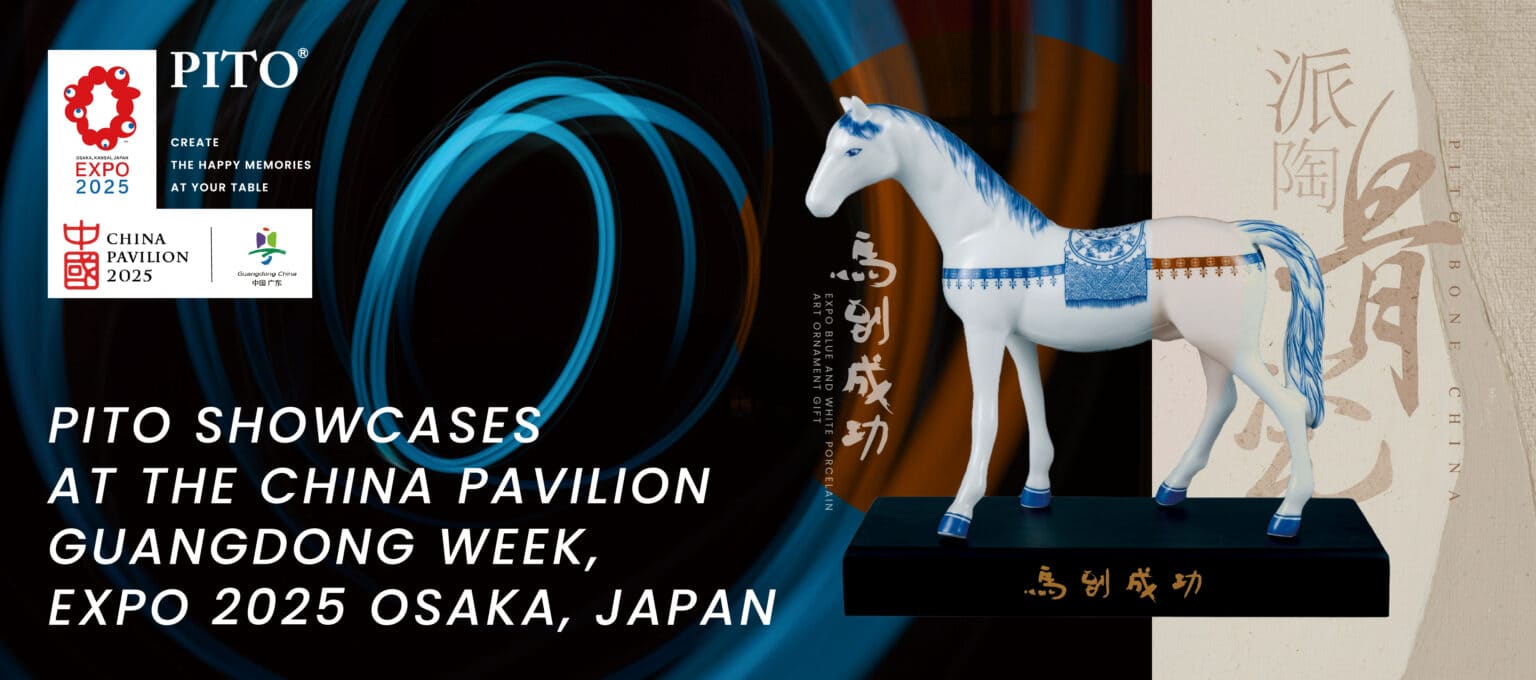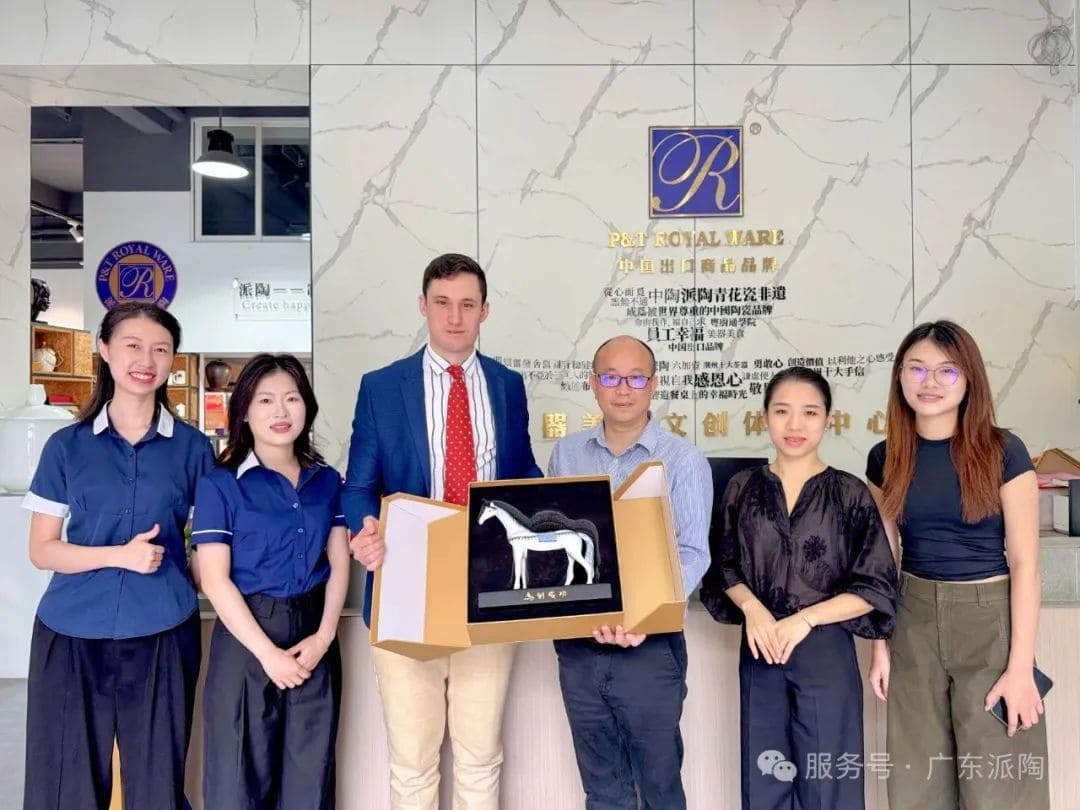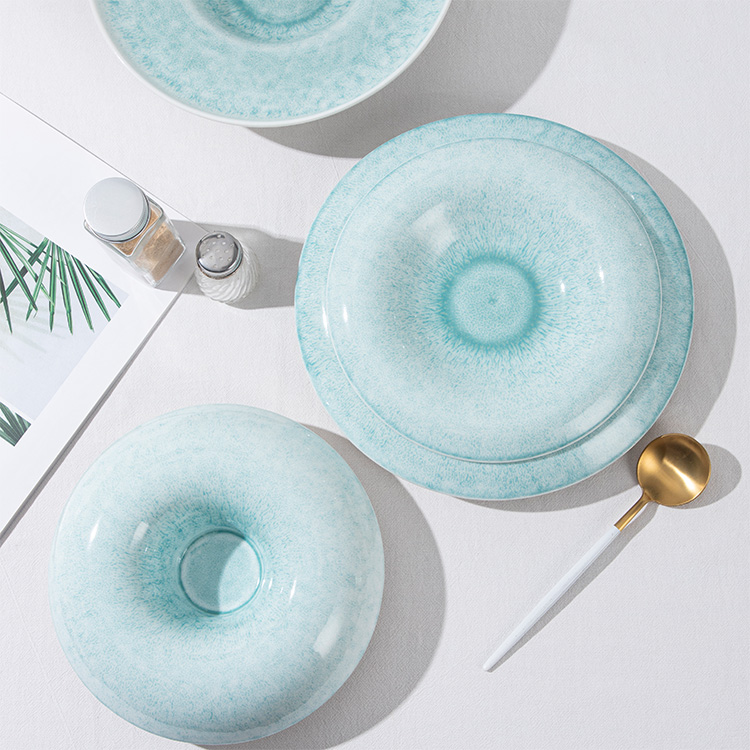
China plates, with their elegance and timeless beauty, have held a significant place in our dining experiences for centuries. From family dinners to grandiose events, these plates have become symbolic of special moments and cherished traditions. However, few people realize the importance of understanding the types of ceramic used in china plates.
In this comprehensive guide, we will delve into the world of ceramic dinnerware and explore the significance of various types of clay materials in the production of these exquisite pieces.
Earthenware
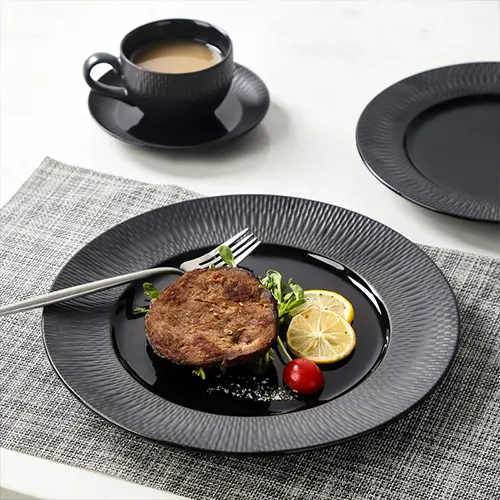
What is Earthenware?
Earthenware is one of the oldest types of ceramics used in the production of china plates. It is known for its warm, earthy tones and rustic charm. Earthenware is fired at relatively low temperatures, typically between 1,000 to 1,150 degrees Celsius, which gives it a porous and less dense structure compared to other ceramic types. As a result, earthenware china plates have a slightly more delicate and less durable nature.
What is Earthenware Made of?
The production process of earthenware begins with a mixture of clay, minerals, and other natural materials. This clay mixture, commonly referred to as terra cotta, is shaped into plates and then fired in kilns. The lower firing temperature of earthenware makes it more accessible for small-scale and traditional pottery production.
Advantages and Limitations of Earthenware
Earthenware china plates have their own set of distinct advantages. Their porous nature makes them ideal for retaining moisture, which is beneficial for certain types of cuisine, such as dishes with sauces or gravies. Additionally, the lower firing temperature allows for a wider range of glaze colors, resulting in vibrant and eye-catching plate designs.
However, it’s important to acknowledge the limitations of earthenware. Due to its porous structure, these plates are more prone to chipping, cracking, and absorbing liquids. Therefore, they may not be suitable for heavy everyday use or dishwashing. Careful handling and handwashing are recommended to maintain their appearance and longevity.
Stoneware

What is Stoneware?
Stoneware is a versatile and popular ceramic type used in the production of china plates. It is characterized by its durability, strength, and versatility. Unlike earthenware, stoneware is fired at higher temperatures, typically between 1,200 to 1,300 degrees Celsius. This high firing temperature leads to the vitrification of the clay, resulting in a dense, non-porous, and chip-resistant finished product.
What is Stoneware Made of?
Stoneware is made from a combination of clay, such as kaolin, ball clay, and silica. These materials are mixed together to form a clay body that can be shaped into plates. The high firing temperature allows the clay particles to bond and undergo a chemical transformation, resulting in a strong and durable finished product.
Qualities and Benefits of Stoneware
Stoneware china plates are highly regarded for their practicality and versatility. They have a natural, earthy aesthetic and are available in a wide range of colors and finishes. Stoneware is known for its excellent heat retention properties, making it ideal for serving hot dishes. It is also microwave, oven, and dishwasher safe, offering convenience in modern kitchens.
One of the key advantages of stoneware is its durability. These plates are less likely to chip or break compared to earthenware. Additionally, stoneware’s non-porous nature makes it resistant to staining and absorbing odors, ensuring long-lasting beauty and functionality.
Porcelain
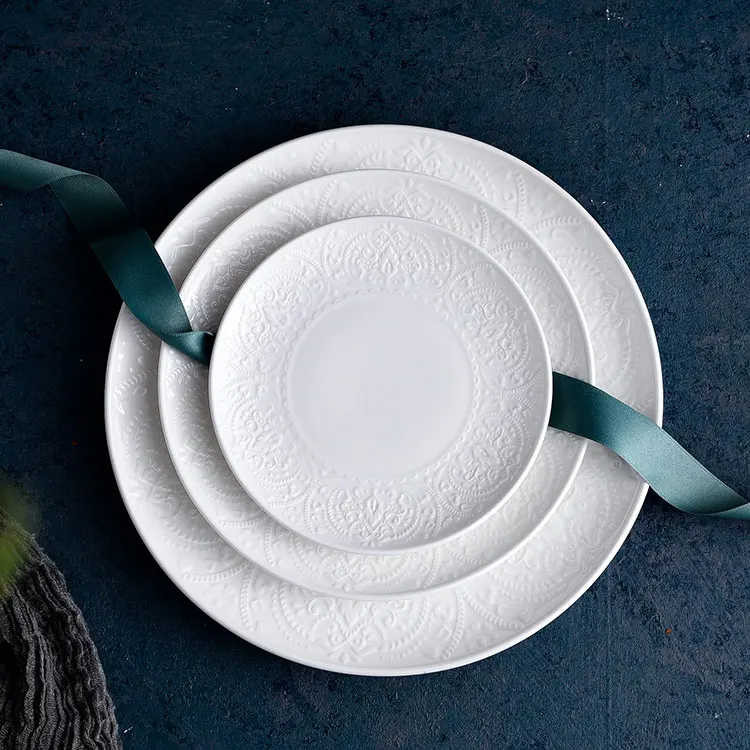
What is Porcelain?
Porcelain is often referred to as the epitome of elegance and sophistication in the world of ceramics. It is a high-quality and translucent ceramic material that is prized for its delicate beauty and durability. Porcelain is fired at very high temperatures, typically around 1,300 to 1,450 degrees Celsius, resulting in a vitrified and non-porous structure.
What is Porcelain Made of?
The production of porcelain china plates involves a meticulous and complex process. It starts with a fine clay mixture, usually consisting of kaolin, feldspar, and quartz. After being shaped, the plates go through the first firing, called the bisque firing. This initial firing prepares the plates for glazing.
Glazing is a crucial step in porcelain production. It not only adds a smooth and glossy finish to the plates but also enhances their strength and makes them impermeable to liquids. After glazing, the plates undergo a final firing at extremely high temperatures, which fuses the glaze to the surface of the porcelain, giving it its characteristic translucent and glass-like appearance.
Qualities and Advantages of Porcelain
Porcelain china plates are highly regarded for their exquisite beauty and exceptional qualities. Their non-porous nature makes them resistant to stains, odors, and bacterial growth, ensuring their sanitary and hygienic use in the kitchen. Additionally, porcelain is highly heat-resistant, allowing the plates to be safely used in ovens, microwaves, and dishwashers.
Porcelain plates are renowned for their translucency, which imparts an ethereal and luminous quality to the dining experience. The thin and delicate nature of porcelain also contributes to its elegant aesthetic, making it a favorite choice for formal occasions and fine dining establishments.
Bone China
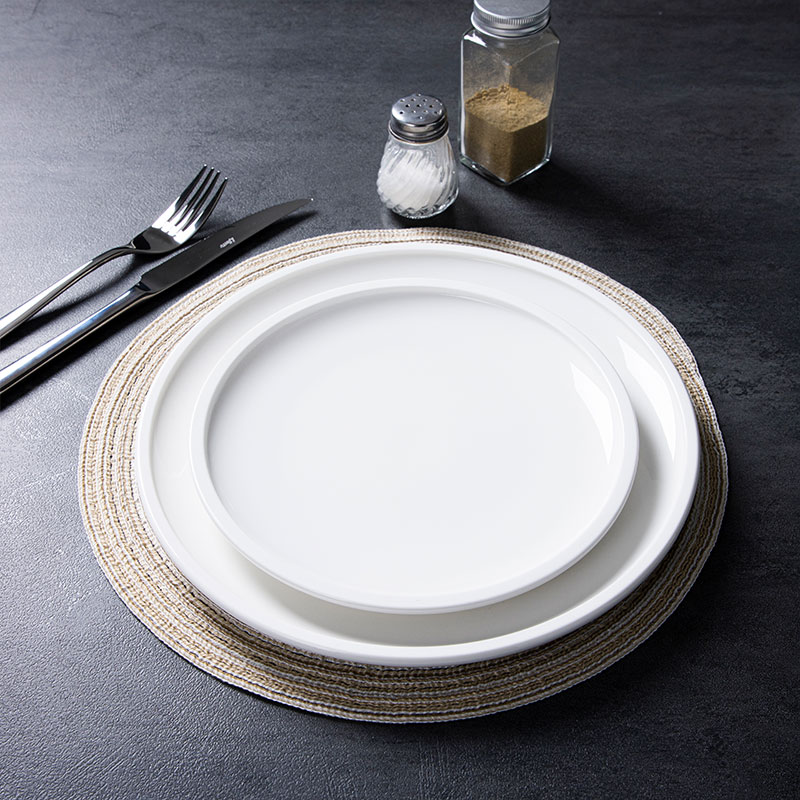
What is Bone China?
Bone china is considered the epitome of luxury and refinement when it comes to ceramic materials used in the production of china plates. It is renowned for its exquisite translucence, delicate appearance, and unparalleled strength. Bone china is composed of a mixture of bone ash, kaolin clay, and feldspathic material. The inclusion of bone ash gives this ceramic type its unique properties.
What is Bone China Made of?
The production of bone china plates involves a meticulous and intricate process. The bone ash, derived from animal bones, is finely ground and combined with the other ingredients to form a clay body. This mixture is then shaped into plates and fired at a high temperature, usually around 1,200 to 1,300 degrees Celsius.
The addition of bone ash in the composition of bone china contributes to its exceptional qualities. It enhances the strength, durability, and translucency of the plates, resulting in a delicate and luminous appearance.
Quality and Elegance of Bone China
Bone china plates are highly esteemed for their unrivaled quality and elegance. The translucent nature of bone china gives the plates a unique luminosity, making them appear almost ethereal. The thin and delicate nature of bone china creates a sense of refined luxury, making these plates highly sought after for formal dining occasions and high-end establishments.
Additionally, bone china plates are known for their remarkable durability. Despite their delicate appearance, bone china is incredibly strong and chip-resistant, making them suitable for everyday use and practical for modern households.
Stoneware vs Earthenware vs Porcelain vs Bone China
| Characteristic | Earthenware | Stoneware | Porcelain | Bone China |
| Composition | Clay | Clay | Kaolin clay | Bone ash, clay, and feldspathic material |
| Fired Temperature | Typically between 1,000 to 1,150 ℃ | Typically between 1,200 to 1,300 ℃ | Typically around 1,300 to 1,450 ℃ | Typically between 1,200 to 1,300 ℃ |
| Appearance | Warm, rustic tones, often with vibrant glazes | Various colors and finishes | Thin, delicate and translucent | Delicate, translucent, often with intricate patterns |
| Porosity | High | Low | Low | Low |
| Durability | Less durable | Durable | Durable | Highly durable |
| Chip Resistance | Vulnerable to chipping and cracking | Resistant to chipping and cracking | Resistant to chipping and cracking | Highly resistant chipping and cracking |
| Translucency | Not translucent | Not translucent | Translucent | Highly translucent |
| Uses | Casual dining, decorative purposes | Everyday dining, oven-to-table purposes | Formal and special occasions, fine dining | Special occasions, formal dining |
| Care Instructions | Handwashing recommended | Dishwasher safe, but handwashing is recommended | Handwashing recommended | Handwashing recommended |
Earthenware
- Made from porous clay fired at lower temperatures, resulting in a more rustic and warm appearance.
- Typically less durable and more susceptible to chipping and cracking.
- Often features vibrant glazes and hand-painted designs.
- Suitable for casual and everyday use.
Stoneware
- Fired at higher temperatures, resulting in a denser and more durable ceramic.
- Known for its strength and chip resistance.
- Retains heat well, making it ideal for serving hot dishes.
- Available in a wide range of colors and finishes.
Porcelain
- Fired at extremely high temperatures, resulting in a delicate and translucent appearance.
- Known for its elegance, refinement, and thinness.
- Non-porous and resistant to stains and odors.
- Can be used for both formal and everyday dining.
Bone China
- Contains bone ash, making it incredibly translucent and delicate.
- Renowned for its unparalleled elegance and luxurious appearance.
- Extremely strong and chip-resistant despite its delicate nature.
- Suitable for formal occasions and special events.
Appropriate Uses and Care Instructions for Each Type
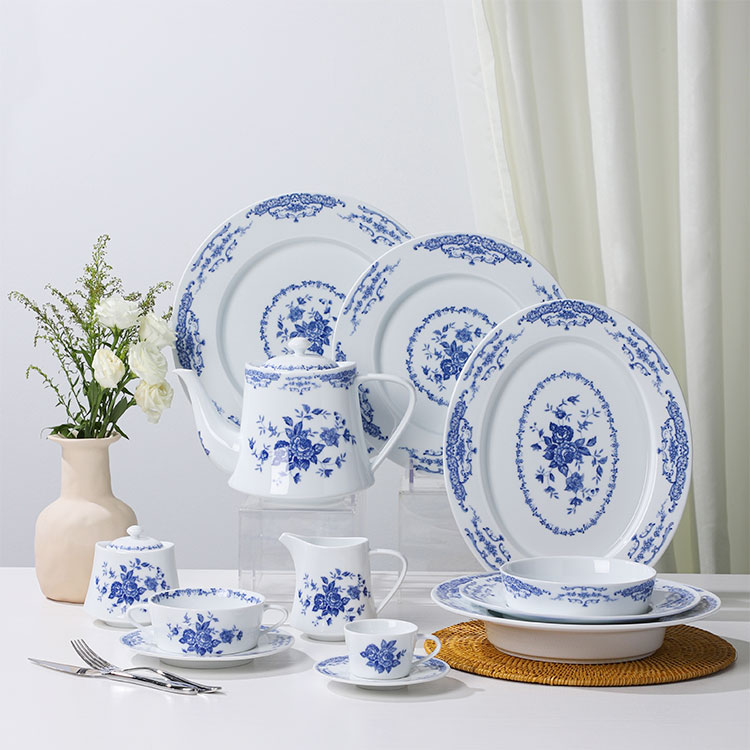
Earthenware
- Suitable for everyday use and casual dining.
- Best for serving room temperature or cold dishes.
- Handwashing is recommended to preserve the glaze and prevent damages.
- Avoid sudden temperature changes to prevent cracking.
Stoneware
- Versatile for both casual and formal dining.
- Suitable for oven-to-table use.
- Can withstand high temperatures, making it ideal for baking and roasting.
- Dishwasher safe, although handwashing is recommended for longevity.
Porcelain
- Perfect for formal dining and special events.
- Suitable for use with delicate and finely prepared dishes.
- Can be used in ovens and microwaves safely.
- Handwashing is recommended to preserve the delicacy and intricacy of the porcelain.
Bone China
- Reserved for formal and special occasions.
- Best for serving fine cuisine and delicate dishes.
- Avoid exposure to high heat sources, as bone china can crack under extreme temperatures.
- Handwashing is essential to maintain its delicate nature and preserve the intricate designs.
Understanding the appropriate uses and care instructions for each type of ceramic ensures that you can enjoy your china plates to their fullest extent and prolong their lifespan. By using the right ceramic type for the occasion and following proper care practices, you can maintain the beauty, durability, and functionality of your plates for years to come.
Conclusion
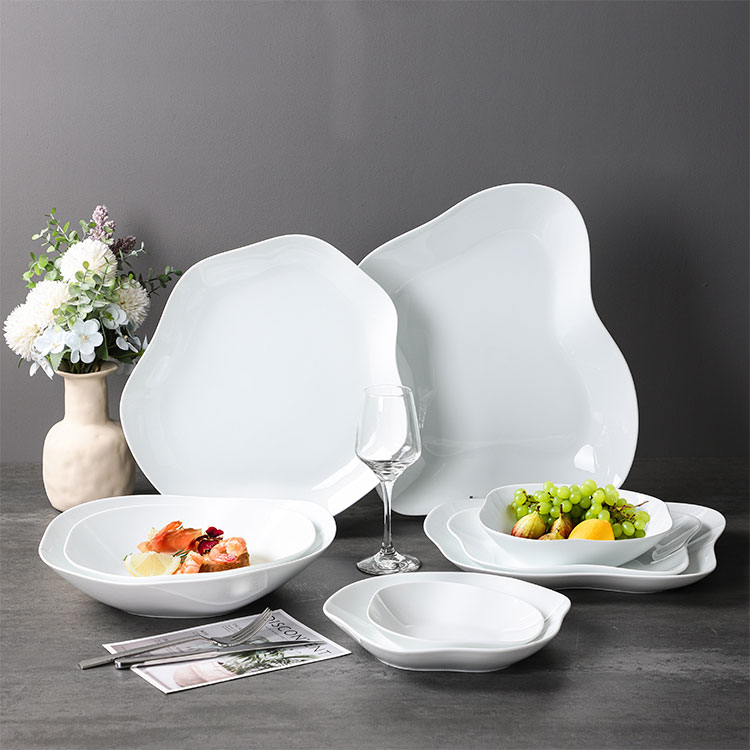
Exploring the different types of ceramic used in china plates allows us to appreciate the craftsmanship that goes into their production and make informed choices when selecting these prized kitchen essentials. From the warm and rustic charm of earthenware to the durability of stoneware, the delicate beauty of porcelain, and the luxurious allure of bone china, each ceramic type brings its own unique characteristics and benefits.
Whether you opt for the rustic elegance of earthenware, the practicality of stoneware, the sophistication of porcelain, or the opulence of bone china, the plates you choose will not only grace your dining table but also become a part of cherished memories and traditions.

